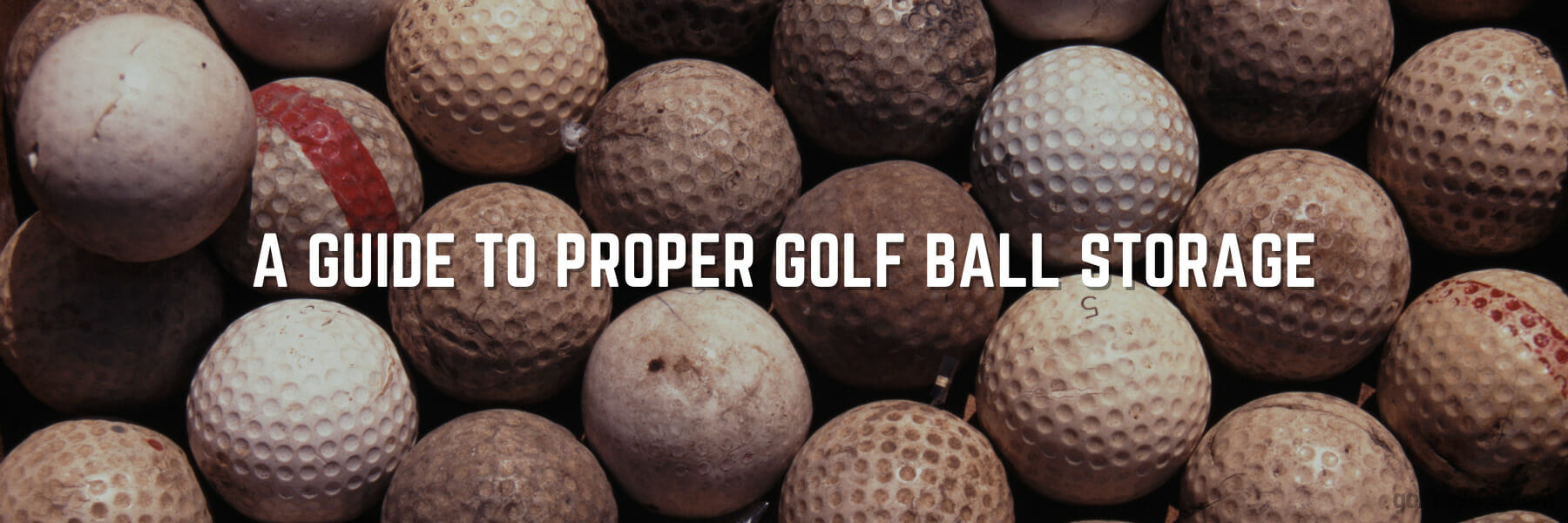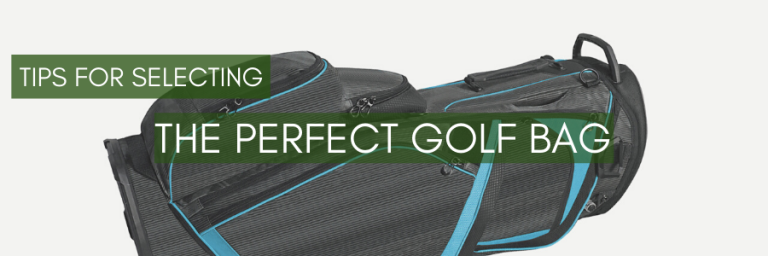A Guide to Proper Golf Ball Storage

!!!!DISCLAIMER!!!! This site may contain Amazon & other affiliate links.
This means if you click on one of the product recommendation links, this site may receive a small commission. This is at no extra cost to you and may include exclusive discounts when possible. This helps support this site and allows us to keep making content like this. Thank you for your support!
Don’t let improper golf ball storage ruin your round. Follow these simple steps to keep your golf balls in the best possible condition for your next game.
Proper storage of golf balls is crucial for optimal performance in golf. This guide will explain the significance of correct storage and offer tips for maintaining their quality. Whether you’re a novice or an experienced player, this guide will enhance your golf game.
The Benefits of Proper Golf Ball Storage
As an avid golfer, you know that golf requires precision and accuracy. Storing your golf balls properly is essential to ensure the best possible performance on the course. Here are some key reasons why:
1. Protects the outer cover: Golf balls are designed with a delicate outer cover that can easily be damaged if not stored properly. This can negatively impact the ball’s performance, affecting your golf game.
2. Maintains the quality of the ball: If you want to get the most out of your golf balls, storing them in a safe and secure place is essential. Proper storage helps to maintain the quality of the ball, which can extend the life of the ball and help you avoid costly replacements.
3. Saves money: Storing can help you save money in the long run. By keeping them in good condition, you won’t need to replace them as often, which can add up over time.
4. Improves overall game performance: By storing your golf balls properly, you can ensure they are always in the best possible condition when using them on the course. This can improve your overall game performance and help you achieve your goals as a golfer.
Just as important as keeping your golf clubs safe, storing your golf balls in an appropriate place is critical to their durability and functionality. Here are some of the different types you may be storing:
1. Two-piece balls
2. Three-piece balls
3. Multi-layered Balls
4. Soft Balls
It is also essential to store new ones properly to ensure their quality when used in the game. Here are some tips for storing new ones:
1. Store them in a temperature-controlled environment to prevent extreme temperature fluctuations.
2. Keep them in their original packaging or a plastic container with a secure lid.
3. Store them away from water hazards, which can damage the outer cover and affect the ball’s performance.
Factors affecting different golf balls’ shelf life and durability include air temperature, humidity levels, and exposure to the elements. By storing it properly, you can extend their shelf life and help them perform at their best on the course.
Types of Golf Balls
When it comes to playing golf, choosing the right type of golf ball is crucial. It comes in different types, each with unique characteristics that affect performance. But do you know what golf ball works well for your game? In this article, we’ll discuss the various types of golf balls and how to store them properly to keep them in tip-top condition.

Shelf Life and Durability of Different Types of Golf Ball
Golf balls are a fundamental part of any golf game. Keeping them safe and in a good state is essential as they lose their property and become worn over time. If you are an avid golfer, you probably have a collection of balls that you use or have saved for a later date.
- Two-Piece Balls are the most common, popular, and inexpensive. They have a solid rubber core with an outer cover of ionomer or similar materials. Two-piece golf balls have a relatively long shelf life and can last up to five years without significant changes. They are designed to handle basic to intermediate golfers’ needs and provide an excellent balance of distance and control.
- Three-Piece Balls: Three-piece golf balls usually have an outer cover, a solid core, and a mantle layer that acts as a buffer. Three-piece golf balls offer better performance than two-piece balls and cater to intermediate to advanced golfers’ needs. They are more expensive than two-piece balls and have a shorter shelf life due to their design of multiple layers.
- Multi-layered Balls: These golf balls are designed to provide specific performance benefits, such as increased distance, spin, and control, by using multiple layers of materials. They can be more prone to scuffs and cuts than two-piece golf balls since they typically have a softer outer cover. With proper storage, multi-layered golf balls can last for a few years before the outer surface starts to break down.
- Soft Balls: These golf balls are designed to provide an increased feel at impact and are often made with softer materials. While the softer feel can benefit some golfers, it can also make them more susceptible to scuffs and cuts. With proper storage, soft golf balls can last for a few years before the outer cover starts to break down.
By understanding the different types and their durability, you can invest in quality balls worth the money and store them following the recommended guidelines. Remember to keep your balls in a temperature-controlled environment and away from extreme temperatures to maximize their shelf life.
Factors that Affect the Shelf Life and Durability
Golf balls come in various types with different qualities regarding distance, spin, and feel. Choosing the right golf ball can improve your golf game, but it is also essential to store them properly. Here, we will discuss the factors affecting a golf ball’s shelf life and durability.
Temperature:
Golf balls are sensitive to temperature. Extreme temperatures can affect their elasticity, which can decrease their performance. It can become harder and potentially crack if left in hot environments, such as a car trunk. Conversely, cold balls will not compress as quickly, resulting in less distance and control when hit. Storing them in a temperature-controlled environment between 50-80 degrees Fahrenheit is best.
Composition:
Two-piece balls and three-piece balls are the most common types. Two-piece balls have a solid rubber core with an ionomer cover, making them more durable and affordable. These types are excellent for high-handicap golfers or beginners. On the other hand, three-piece balls have a softer exterior and softer core. The construction of these balls makes them more expensive, but they are often preferred by low-handicap golfers or players who want more control over their shots.
Usage:
The more you use a golf ball, the more it will experience wear and tear. A golf ball with scuff marks or cuts is less likely to perform well. Limit your golf ball usage to one round of play. If you enjoy practicing your golf game, it’s recommended to use practice golf balls to avoid damaging your premium golf ball.
Handling:
How you handle golf balls can also affect their shelf life and durability. Dropping them, scratching them with your clubs, or bouncing them off hard surfaces can all damage them. When carrying golf balls in a golf cart, use a strong handle that can prevent the balls from falling out. Another solution is to purchase a golf ball pouch that can securely hold extra golf balls while playing.
Different Golf Ball Storages
As a golf enthusiast, you understand the importance of sound equipment, including the balls you use on the green. Realizing that proper storage is essential for keeping your golf balls in excellent condition, let’s dive into the various golf ball storage options available to avid golfers.
1. Golf Ball Storage Containers
Golf ball storage containers are an excellent way to keep unused golf balls organized and safe. These containers come in different sizes and shapes, from small pouches to larger buckets. Standard golf ball storage containers include boxes, plastic, and bags.
Pros:
– Helps you keep your golf balls organized and stored neatly
– Provides the necessary protection from extreme temperatures and moisture
– Enhances the convenience of carrying your golf balls from one place to another
Cons:
– Some containers may be too small and not store as many golf balls as you need
– Some cheap containers may not provide adequate protection for your golf balls.
2. Temperature-Controlled Golf Ball Storage
Investing in a specialized solution may be worth considering if you want to store your golf balls in a temperature-controlled environment. These storage options are equipped with technology that helps maintain your golf balls at optimal temperatures, essential for durability and shelf life.
Pros:
– Provides the perfect solution to preserve your golf balls under any temperature range
– Increases the shelf life of your golf balls
– Reduces the risk of damage caused by temperature fluctuations
Cons:
– These solutions can be expensive
– Not a practical option for most casual golfers.
3. Golf Ball Bags for Carrying Extra Balls
As a practical and affordable solution, carrying extra golf balls in a golf bag is popular among golfers. Most modern golf bags have built-in pockets for holding extra golf balls.
Pros:
– It is convenient, especially during long rounds of golf
– Provides a lightweight solution for transporting extra golf balls
– Can fit up to a few dozen golf balls, depending on the bag size.
Cons:
– Extra balls in a golf bag may not be well organized
– Can be noisy while transporting the bag
Golf Ball Maintenance: Tips and Tricks
Golf ball maintenance is a critical aspect of golf, as even small amounts of damage to your golf ball can affect your performance, swing speed, and score. Poorly maintained golf balls can cause frustration during your game by not flying straight or failing to roll correctly. Hence, it’s essential to learn the best practices for maintaining your golf balls to ensure their durability and shelf life.
Here is a beginner-friendly guide to help you maintain your golf balls properly.
1. Inspect your golf balls regularly
To ensure your golf balls last longer, you must watch for any signs of damage and wear and tear. Examine your golf ball before and after each game for scratches, cracks, or cuts on the outer cover. If you notice any damage, you need to replace the ball immediately.
2. Clean your golf balls regularly
Cleaning your golf balls with a mild soap solution and a soft cloth will help maintain their performance. Avoid using harsh chemicals, scrubbing too hard, or exposing them to extreme temperatures.
Here’s how to clean your golf balls:
– Fill a bucket or sink with warm water.
– Add a small amount of mild soap solution.
– Soak your golf balls for 5 to 10 minutes.
– Wipe them clean with a soft cloth.
– Let them air dry at room temperature.
Final Thoughts
Proper golf ball storage is crucial for maintaining the quality and performance of your golf balls. The main takeaways from this article are the importance of keeping golf balls away from extreme temperatures and choosing storage options that provide adequate protection for the outer cover and core.
When considering your golf ball collection and specific needs, consider your climate and play frequency. This will help you choose the best storage method for your golf balls.
In addition to these tips, there are some best practices for maintaining the longevity of your golf balls. These include avoiding water hazards, cleaning your golf balls after each use, and investing in premium golf balls with durable covers and cores.
Properly storing your golf balls can reap several key benefits, such as maximizing your swing speed, improving your mental game, and reducing costs by avoiding purchasing new golf balls frequently.
Therefore, we urge all avid golfers to carefully consider their golf ball storage options and choose the best solution. With the correct storage method and proper maintenance, your golf balls can remain in excellent condition and take your game to the next level.
Frequently Asked Questions
Here are some frequently asked questions about storing golf balls and their answers:
Q: How long do golf balls last?
A: Different golf balls have different lifespans, but on average, a golf ball can last for five to seven years. However, the duration of their lifespan depends on multiple factors and how they are stored.
Q: What factors affect the lifespan and durability of golf balls?
A: The material of the golf ball’s outer cover, core, and mantle determine its lifespan. Two-piece golf balls are the most durable as they have a solid rubber core and a harder Ionomer cover. Three-piece golf balls with a softer Ionomer cover are less durable, but many golfers prefer them for performance. Additionally, Exposure to extreme temperatures and the number of hits on the ball are also variables that affect the shelf life of a golf ball.
Q: What effects do extreme temperatures have on golf balls?
A: Extreme temperatures can significantly affect the shelf life of golf balls. Balls stored in cold environments will harden, reducing their performance, while those in hotter environments will expand, leading to a loss of elasticity and ball speed. A temperature-controlled environment within the range of average temperatures is the best for storing golf balls.
Q: What are the best storage options for golf balls?
A: There are many golf ball storage options, and the best one is the one that suits your needs. You could use plastic containers or golf ball buckets, but ensure they have a strong metal handle. A golf ball pouch also works well; you can hang it on your golf bag. Investing in a golf ball storage container is a perfect solution, as it will provide extra protection and help maintain the balls’ quality for longer.
Q: How should I store unused golf balls?
A: Unused golf balls should be stored in a dry place, away from high temperatures, such as the trunk of your car. Placing them inside their original boxes or storage container with a lid will help prevent moisture, dust, and sunlight from reaching them.





